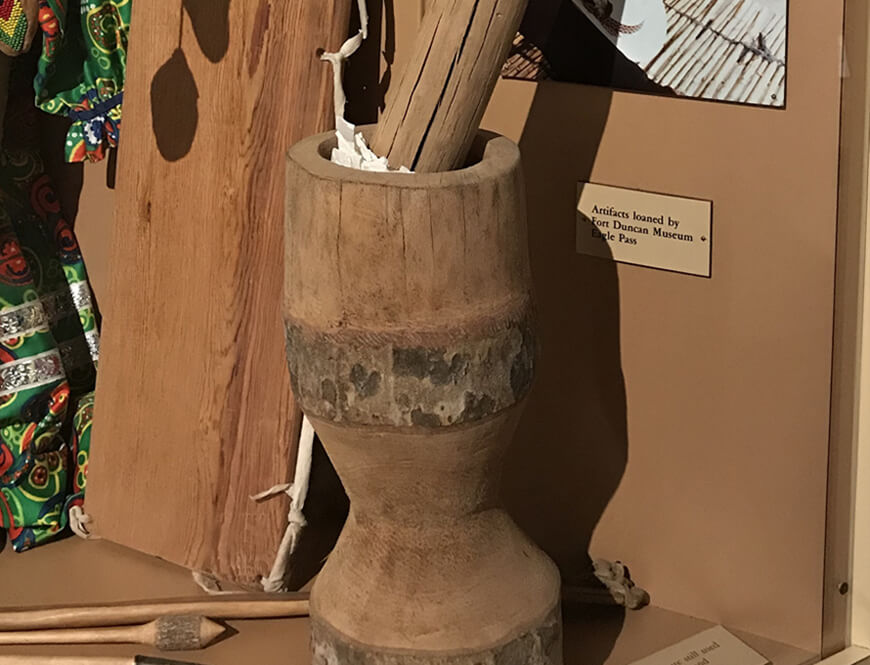Mortar and pestles have a long history and varied uses by cultures around the world. The tool has been used to grind or crush all types of materials for centuries. They are used for cooking, medicines, alchemy, rituals, makeup, gunpowder, etc. The material is placed in the mortar, or bowl, and crushed up by hand using the pestle, the club-like stick piece. The use of mortar and pestles was very common in alchemy and early medicines in order to grind up herbs and other plant materials. That history can still be observed through the current use of the mortar and pestle symbol in pharmacy logos. They were also used for creating pigments before the invention of artificial paints. Flowers, fruits and plants were pulverized to create a colored powder, which was then used for painting, makeup, dyeing clothing, etc. Cochineal insects were crushed to make red pigments. While we no longer hand crush them with a mortar and pestle, the crushed insects are still used in makeup, candy, and other food items such as carmine or natural red 4.
When people think about mortar and pestles, one of the first things that comes to mind is food. You can grind up spices for salsas, plantains for mofongo, avocados for guacamole, garlic and basil for pesto, anchovies for Caesar dressing and so on. The mortar and pestles can be made out of many different materials such as wood, stone, glass, ceramic and metal. Choosing which material is best depends on the purpose it is being used for. Ceramic and glass tend to be used for medicines, while stone and wood are more common for food.
The mortar and pestle pictured above is from the Kickapoo Native American tribe. The Kickapoo tribe originated in the Great Lakes region. The first documentation of the tribe comes from European settlers around 1600. When the French colonists pushed into the Great Lakes region, conflicts arose with the Kickapoo tribe. In 1712, the French and the Kickapoo fought against each other, resulting in a French victory by forcing the tribe to make peace. The Kickapoo tribe would later go on to be players in the French and Indian War, where they sided with the French. They also played a role in Pontiac’s Rebellion. The tribe was forced to relocate many times around the country before ending up in Eagle Pass, Texas and Coahuila, Mexico, where they still remain today, thousands of miles from their original homeland. Their mortar and pestles were commonly made from wood, like this one. Kickapoo mortar and pestles were made from the Montezuma Bald Cypress, Sabino, and Sycamore trees, alamo.
Some foods are difficult to eat as they are naturally, so pulverizing hard foods can make them easier for humans to eat. They can also turn inedible food into delicious creations. Wheat in its natural form is not easily digested by humans and does not provide very many nutrients, but when you crush it up into a powder it becomes flour. Then, the flour can be turned into multiple types of breads that are better absorbed by the human body. The mortar and pestle also provides alternative ways to prepare one type of vegetable. You can cook corn on the cob and eat it as is, or you can grind it into a powder which can be used to make masa for tortillas, tamales and more. A few examples of foods that the Kickapoo tribe used the mortar and pestle with are: the fruit of the Hackberry tree which was crushed then eaten; the Hog-plum was crushed then steeped in water for a drink; beans from Honey Mesquite trees and the hearts from Texas Palm plants were dried then pounded into a powder or meal which could then be used to make other dishes.
